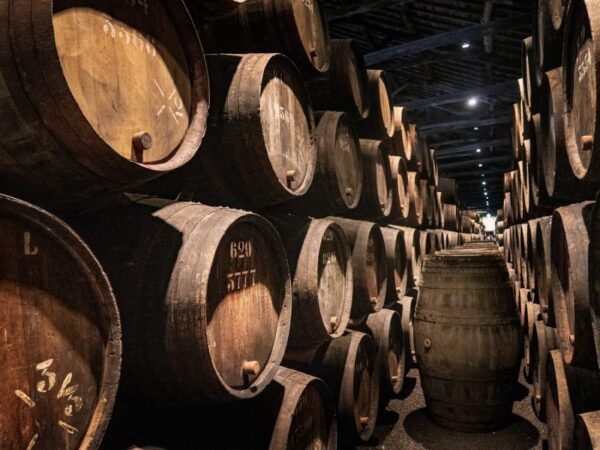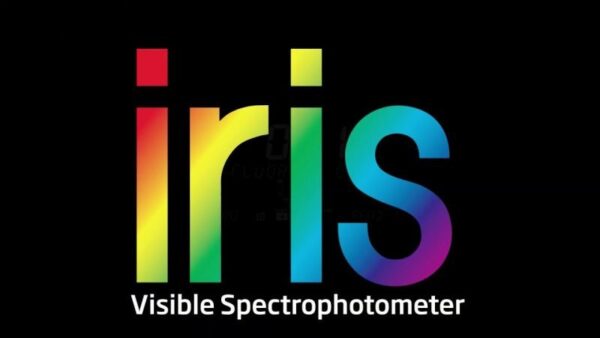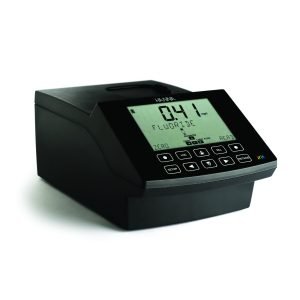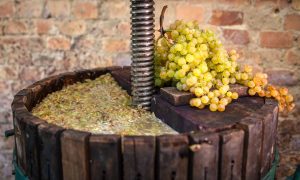The core of enzymatic methods is the property of the enzymes to catalyse specifical chemical reaction with certain metabolites. The benefit of this kind of analytical method is that can be applied with no major modification to the analysis of drinks. By these methods, about 15 constituants of must and wines can be determined. If we don’t talk about the price, their sepcificity, sensitivity and rapidity would enable them to compete with the most precise of chemical methods. This is the reason why they are only used in analytical oenology.


Acetic Acid
Acetic Acid is produce in wine during the fermentation or after. During fermentation, yeast will produce small amounts of acetic acids. If the wine is exposed to oxygen, bacteria will start to metabolise ethanol into acetic acid. This will lead to acetification of the wine and its degradation into the vinegar. It can be formed in wine and during the biodegradation of citric acid. The taste of the wine will be sour and off. To prevent this, no air should be left in wine tank during fermentation. It is monitored throughout the process, also known as Volatile Acidity (VA). Healthy wine contains 0.3-0.6 g / L, less often up to 1 g / L, while rotten wine 1.1 g / L
Acetaldehyde
Acetaldehyde is mostly produced by yeast and bacteria during fermentation, but this is not the only way. Acetaldehyde is an intermediate product during the bacteriological conversion of etahnol to acetic acid by bacteria. When the alcohol concentrations are low and highly exposed to oxygen, significant concentrations of acetic acids are formed. When alcohol concentrations are high and there is limited oxygen exposure, bacteria tend to produce more acetaldehyde. It is important for the flawor, unwanted in higher concentrations because it gives the taste of aged, oxidized and aerated wine..
Ammonia
Nitrogenous compounds such as ammonia are essential to the winemaking process. A sufficient concentration of nitrogen must be present in the grape juice for healthy yeast metabolism and an efficient fermentation. Low nitrogen levels can result in slow or incomplete fermentations. Total nitrogen (present in the form of ammonia and amino acids) is commonly measured in must before fermentation to ensure an adequate concentration of yeast available nitrogen (YAN) for efficient fermentation. Any ammonia not consumed by the yeast during fermentation remains in the finished wine. Ammonia in wine can impact flavor and microbial stability in the finished product. Typical concentrations for ammonia in finished wine range between 3-50 mg/L.
L-Arginine/urea/ammonia
If we talk about determination of YAN (L-Arginine, urea and ammonia), that is an indicator of the amount of available nitrogen for yeast growth. YAN has three components: free ammonium ions, amino nitrogen from free amino acids and from the side chain of L-Arginine. The concentrations of these compounds may vary widely and YAN can be managed by addition of nutrient supplements to must prior to or during fermentation. During malolactic fermentation, lactic acid bacteria can degrade arginine, which will lead to creation of ammonia and citrulline. Ammonia increases the pH and that can lead to the risk of growth spoilage bacteria, while citrulline is a precursor of carcinogenic ethyl carbamate.
Ascorbic Acid
Ascorbic Acid is naturally present in grape but in low concentrations and mostly it is lost throughout the ripening process. Application of ascorbic acid in winemaking is in technological procedures of aeration protection. It is mostly used for scavenging molecular oxygen and preventing the onset of oxidative spoilage (browning) of white wines. Ascorbic acid is great antioxidant and good to use with sulfur dioxide. EU has a 150 mg/L limit.
Citric acid
Only about 5 percent of the total acid is citric acid in grapes. Citric acid is easily metabolised into other molecules by wine microorganisms. It can be metabolized into lactic acid and acetic acid by some bacteria. High concentration of citric acid are never desirable in wine. Once, citric acid was commonly used during fermentation to boost acidity of the wine, especially for the wines that are sweet and grow in warmer climates. Today it is mostly used as a stabiliser to prevent ferric hazes. Within the EU citric acid can only be used for stabilisation purposes and the final citric acid content should not exceed 1 g/L.
Ethanol
Ethanol is the only alcohol intendet for human consumption. During fermentation ethanol is created from glucose. The vast majority of wines have an alcohol level between 12 and 15%. Quantities over 17.5% indicate its addition. Enzymatic determination of alcohol concentration is quite simple. Ethanol in the presence of the enzyme alcohol dehydrogenase and the reduction of NAD + to NADH is converted to acetaldehyde which can be further metabolized to acetic acid.
D-Glucose/D-Fructose
They are naturally occurring in grape and they ferment to alcohol. They are known as total reducing sugar and they indicates the amount of sugar that is available to the yeast to conduct fermentation. After the fermentation, the amount of total fructos and glucose that remaines is called the “residual sugar”. They indicates how dry a finished wine will be. Total residual sugar levels should be measured throughout fermentation and, after fermentation is completed so you can achieve the disired taste profile. . For the vast majority of measurements taken during the wine making process it is unnecessary to differentiate between the D-glucose and D-fructose.
D-Lactic acid
In the wine industry, the production of D-lactic acid can indicate wine spoilage by lactic acid bacteria. This will alter the taste of wine and it is unwanted in wine. L-lactic acid is created during malolactic fermentation by decreasing L-malic acid. This chemical reaction is wanted in some sort of wine.
D-Malic acid
The detection of D-malic acid in juices or wine indicates that it has been added. The legal situation concerning the addition of D-/L-malic acid to juice or wine varies between countries. It contributes to the taste of wine. L-malic acid is naturally present in wine and it is malolactic fermentation reactant.
Mannitol
Mannitol is polyol, known as sugar alcohol. In wine, it is produced by lactic acid bacteria, by the reduction of fructose. High concentrations are unwanted because it gives vinegary-estery, slightly sweet taste to the wine. It is usually produced in wine if the malolactic fermentation is being conduct in presence of high level of residual sugars.
Free & Total Sulfite
SO2 is used widely as an additive in the wine. They are usually added at post-malolactic fermentation, in control of contamination and during aging. It also protects the wine againast detrimental “oxidative and enzymatic browning”. “Free”, unbound form of SO2 is only active as an antimicrobial and antioxidant preservative. When “free” SO2 binds the colour pigments of the wine it becomes “inactive”. Every country has legal restrictions on SO2 levels in wine and because of that it is important to measure Free SO2 (FSO2) and Total SO2 (TSO2). Some people have sulphite intolerance (they are on the list of the most common allergens), therefore there is a requirement for accurate determination of the level of sulphites in wines and other foods.
Tartaric Acid
Tartaric acid is naturally present in grapes and it is one of the most prevalent organic acid in wine. This acid mostly contributes to total (titratable) acidity in wine. The general levels of total acidity in wines range from approximately 0.4 to 1.0% (w/v). If the total acidity of a wine is too high, tartaric acid can be added to decrease the pH level. This in turn acts as a preservative against microbial spoilage.
Best option for most accurate spectrophotometric measurement
What your eye can’t see, Iris can




The HI-801 Iris is a sleek and intuitive spectrophotometer that allows for measurement of all wavelengths of visible light. You can customise your methods, take a wide range of measurements, and feel very confident in your testing accuracy with Iris. This compact meter incorporates a number of features that facilitate both fantastic performance and exceptional usability such as:
⦁ Advanced split beam optical system
⦁ Rechargeable Li-ion battery
⦁ User customizable methods
⦁ Step–by–step method creation
⦁ Capacitive touchpad
⦁ Advanced split–beam optical system
⦁ Intuitive menu design
⦁ Universal cuvette holder
Iris features precise wavelength selection between 340 nm to 900 nm for complete method compliance and accuracy that is necessary in industries like professional laboratories, food industries, water treatment facilities, and more.
Results are consistent and accurate regardless of throughput with the high quality and uniquely designed optics system.
Customisation options include multiple cuvette shapes and sizes, custom calibration curves, and methods.
The 6 inch display screen is large and easy to read. The high contrast makes every character on the display stand out – even during outdoor use.
With its universal cuvette holder and auto-recognition feature, cuvette sizes can be changed when needed between round, square & vial.
No need for measurement conversions
Whether you are testing for chlorine or running enzymatic assays, our spectrophotometer will conveniently display results in the units that matter most to you. iris can measure in transmittance, absorbance, and concentration based on your need.
Pre-programmed methods with the option to expand
iris comes pre-programmed with more than 80 commonly used chemical analysis methods to help you get started. Simply update these methods by connecting to a computer or flash drive.
Customise your iris with up to 100 personal methods. iris will guide you through the method creation process step-by-step. For added versatility, each method can include up to 10 calibration points, five different wavelengths, and up to five reaction timers.
Easily access your favourite methods directly from the home screen to save time.
Built in timers make measuring seamless. The countdown timer displays the time remaining until a measurement will be taken, ensuring consistent results between measurements and users. If you get stuck, the tutorial mode will walk you through the steps.
Designed for dynamic environments
iris・ compact profile and long-lasting battery make it easy to set up anywhere in your lab. The rechargeable lithium ion battery lasts for 3,000 measurements, or 8 hours ・ well over a full day of use out in the field.
Quality data without the hassle
Export your results with a USB drive or direct PC link organized by sample ID, method, or date range. Save data as a .pdf or .csv for maximum data integrity or flexibility ・ all without the use of specialized software.
Sort and share your data
Save data as a .pdf or .csv for maximum data integrity or flexibility. Have the freedom to choose the file format that is best for you.
Menu navigation that makes sense
Quickly navigate between screens with custom keys, and access your favourite methods directly from the home screen with our 吐avourite methods・ feature.
All of your important information is easily visible
With a 6・ display, the screen is large and easy to read. The high contrast makes every character on the display stand out even during outdoor use. The wide viewing angle allows for measurements to be seen from far away, so while working around the lab it is not necessary to hover over the meter to see the measurements.
Zero resistance with a capacitive touch pad
Menu buttons are part of the display. Built to be fully sealed and easy to clean, the meter recognises key touches even through gloves.
Change sample size easily
With its universal cuvette holder and auto-recognition feature, cuvette sizes can be changed when needed. The programmed cuvette size will be displayed on the screen every time you test to ensure that the proper path length is being used by the meter when calculating measurements for correct results.
Author: Tajana Mokrović, mag.nutr.






